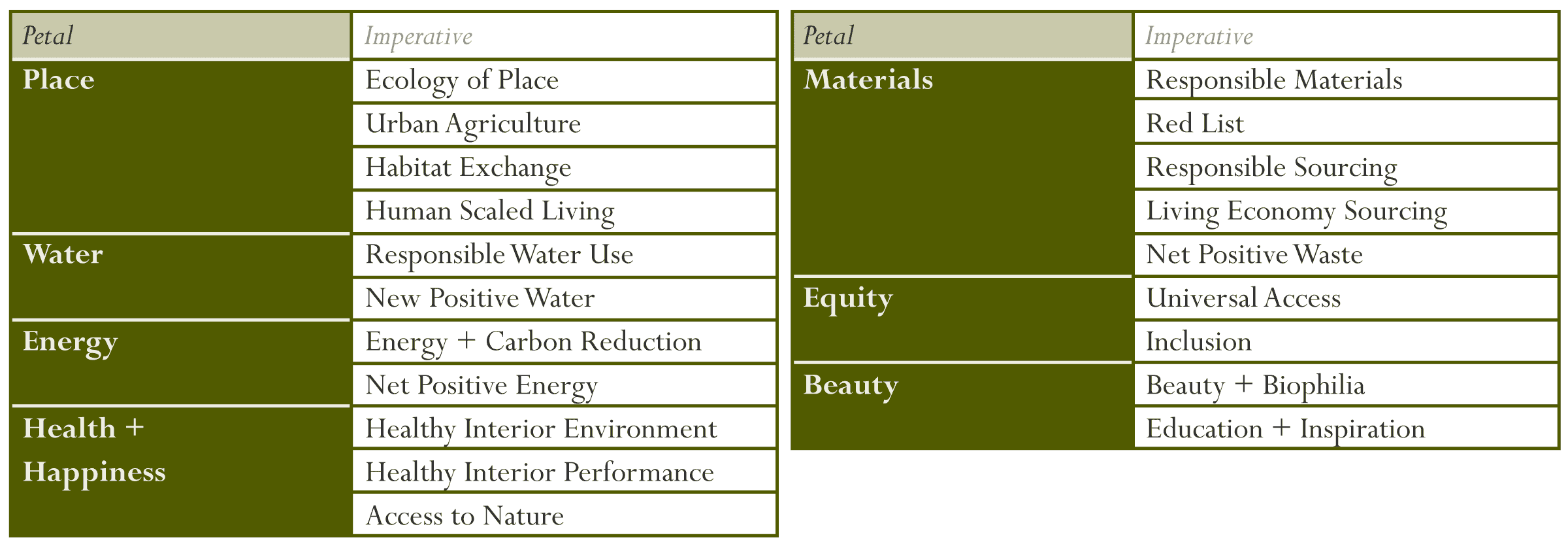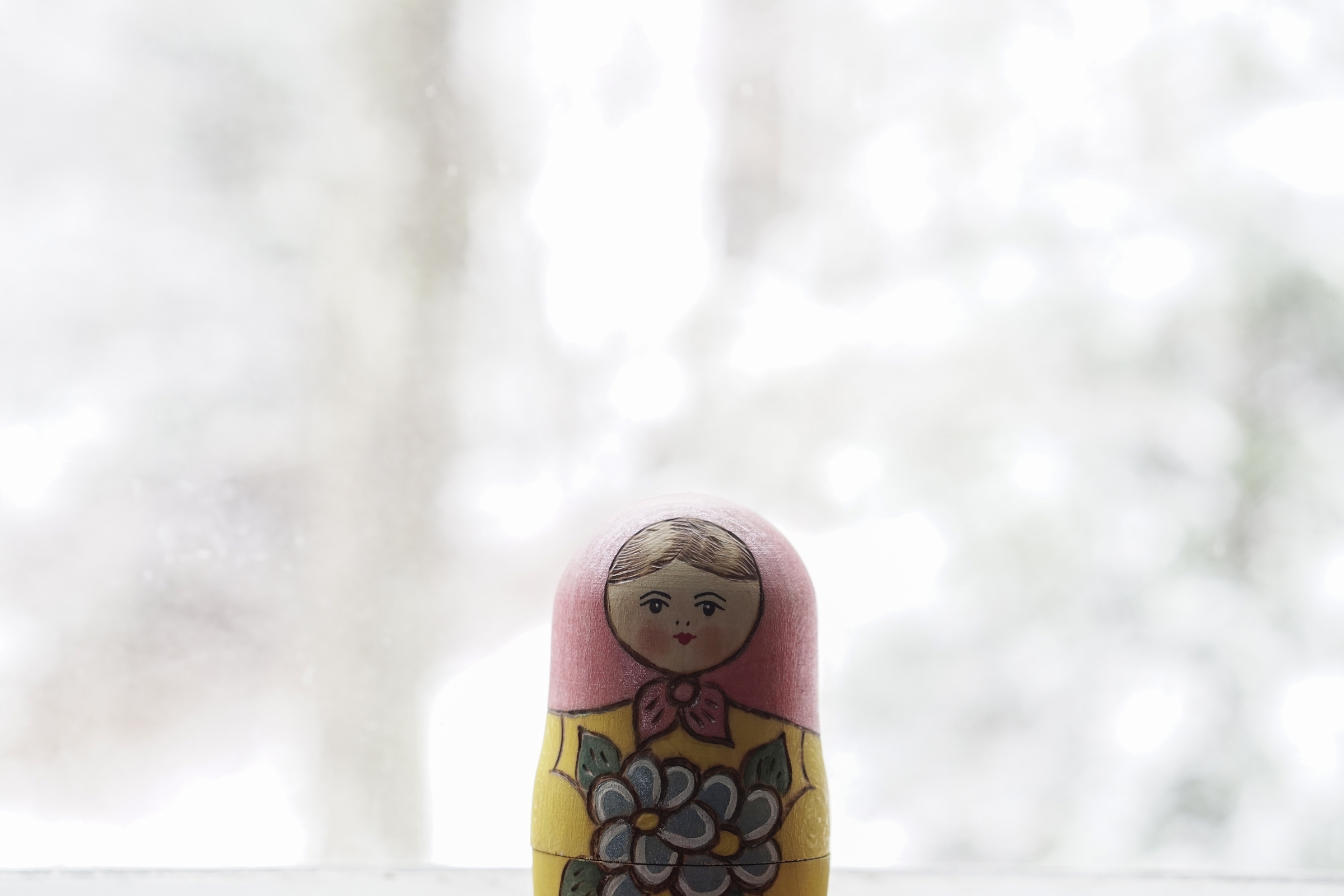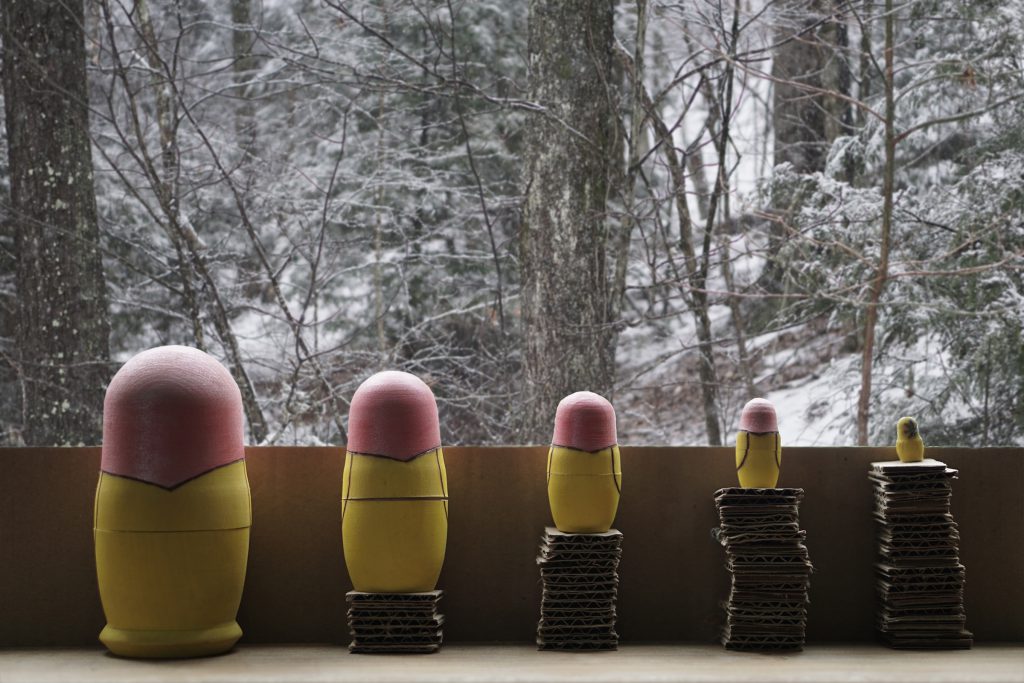LBC: The Equity Petal
Matryoshki being equitable as they gaze at a winter scene.
Dear Readers,
We are now on part six of seven of the Living Building Challenge. Our past blogs have covered the LBC’s Petals of Place, Water, Energy, Health and Happiness, and Materials. I know, these blogs just seem like they won’t end! As you have read above though, we are almost there, with two Petals left. And if you managed to read that last blog, the Materials Petal, then you’re in for a treat here, this blog is much shorter…
Once again, here’s that chart of all the Petals and their Imperatives.

The Seven Petals of the Living Building Challenge and their Imperatives
The Equity Petal
Our sixth Petal is the Equity Petal. Equity is the situation in which everyone is treated fairly and equally.1 The International Living Future Institute believes that a sustainable world is also a just world. If everybody was given everything they needed to succeed, imagine the things our society could accomplish. We have obviously come a long way, but in order to meet the Living Building Challenge standards, we must continue to push these boundaries.

The Equity Petal and its two Imperatives
There are two Imperatives of the Equity Petal: Universal Access and Inclusion.
In order to meet the Universal Access Imperative, a project must make any non-building (public infrastructure ~like roads, or plazas) equally accessible to all members of the public. Projects in denser Transects L3 – L6 (except for single family residences) will have to enhance the nearby public space through accessible design features (like benches, art, or gardens). Projects must meet the Americans with Disabilities Act (ADA) standards, or an equivalent standard. Lastly, no project is allowed to restrict access to or degrade: fresh air, sunlight, or natural waterways; and audible noises to the public must be mitigated.2
How the Universal Access Imperative will impact us and The Seed:
As you just read, some of this Imperative does not necessarily apply to single family residences, like our project. However, that doesn’t mean we shouldn’t consider them! If there’s an aspect to our project that Shelby and I can integrate to help make this world a better place, then why not do it?
The land that we will be building our home on is accessed by shared private roads. Granted, they’re not public, but these roads belong to more than one person and they’re accessed by many. Shelby and I will be doing our part to make sure these roads are maintained, either by physically pitching in to repair parts of it, or plow it when necessary, or by monetarily helping the individuals who have been caring for the roads. I’m not sure that we’ll be adding any crazy design features, but our road is a one-lane road, so maybe we’ll provide a turn-around at the end of our driveway…if you can think of something cool we could do for the few people that come by our secluded, wooded area, please mention it below.
The next stipulation of this Imperative, meeting ADA standards, is honestly something Shelby and I were already envisioning before we came across the Living Building Challenge. Just as I had mentioned back in the Health and Happiness Petal blog, every home should have natural light – every home should also be accessible by anyone and everyone. Now, yes, not everyone is handicapped, and you may not see the need to make every home accessible if you yourself are not handicapped. Shelby and I however envision this home we are building to be prepared for us to use if our lives ever significantly change, which can happen any time unexpectedly. We also intend to live in it for a long time, and know that designing to ADA standards would make it a lot easier on us when we’re older. Not to mention, elderly and handicapped guests would appreciate an accessible design. A house that is also accessible to more people, for a longer lifetime, is also a more sustainable home – affording individuals the opportunity to stay in their home rather than move when life gets tougher.
The last element of the Universal Access Imperative, open access to air, sunlight, water and peace, should not be a tough one to meet for our home. We don’t intend to burn anything or release any chemicals to power or heat our home (and intend to eventually own electric cars), so the air around our home should be clean. There are not any buildings near enough for us to create shadows on, and our home is also small, so our neighbors and even those on the nearby road should have no change in access to sunlight. We also have no waterways on our property, but it is at the top of a hill – which means water runoff will make it to neighboring properties. As part of the Water Petal, we have to make sure that we don’t disrupt the natural stormwater runoff. However, we should not be creating much runoff in the first place due to our rainwater collection system- where a gutter and downspout usually create a rush of runoff, our water will be collected. We do have to make sure we use no chemicals on our property for gardening or otherwise. Lastly, we intend to not disturb the peace in the area with loud noises, that’s part of the beauty of our property anyway. If our house, vehicles, and tools (like lawnmowers and chainsaws) are all electrified so we don’t pollute the air, then we also won’t be adding noise pollution to the area. With a super-insulated Passive House build, we should also be able to party indoors without our neighbors hearing any rave music!
The Inclusion Imperative requires that at least two integral organizations for the design and construction phases must have Just labels, and five additional organizations must complete a Just self-assessment. All projects must also include vulnerable or disadvantaged stakeholders in design, construction, and operations/maintenance phases at specific levels of involvement, OR donate 0.1% of total project costs to an equitable-focused, community-based nonprofit in the area.3
How the Inclusion Imperative will impact us and The Seed:
The Inclusion Imperative is going to be a little tricky for us, since our home is such a small project and it’s being built in rural America. There will be many teams involved, in small and large parts, to help make this project happen. We’ll have an experienced architect look over my eventual and probably naïve drawings. We’ll have different engineers at different phases help us out with foundation and structural problems. We’ll have my father’s contracting business help us build the home, but will probably also need other contractors to help with more specific tasks (like putting the CLT together). All of these organizations could have Just labels or do self-assessments for the International Living Future Institute’s Just Organization, and Shelby and I will have to pick them wisely to meet this Imperative. I wonder if my father would be interested in obtaining a Just label for his company…
As I mentioned above, we are building this home in rural America, and Shelby and I consider neither of us (the stakeholders) to be vulnerable or disadvantaged. Simply put then, to meet the second part of this Imperative, we will probably have to donate 0.1% of our project costs to a local nonprofit focused on equity. We are not sure who that would be, and not even sure if any exist in Perry County, so we will be looking! If there are none in our county, we’re not too far from Harrisburg, and I’m sure we could help out a nonprofit organization there. Shelby and I are quite lucky that we can even consider doing a crazy project like this (as difficult as it may be, the opportunity is still there) and to help break some barriers for others without such opportunities is imperative to our mission of making this world more sustainable. So if you have any suggestions that we can consider to help out when we really start getting into this build, please mention them!

Just a Matryoshka
Our little home may not play a huge role in addressing the barriers that many have in our society today, but it can play a small part. Although this Petal of Equity may seem a lot easier to meet than the last Petal of Materials, it makes it no less important. A just world is a thriving, sustainable world, and whatever our project can do to contribute to that cause would be an honor to do.
Alright folks, that wraps up our sixth Petal, with one left to go. Tune in next time to learn how we’re going to conquer the Beauty Petal, and hopefully complete the Living Building Challenge! Thanks for reading!
William Aldrich
1. Cambridge University Press. Equity. Accessed 7 December 2020. EQUITY | meaning in the Cambridge English Dictionary.
2. International Living Future Institute. Living Building Challenge, Version 4.0, Seattle, 2019. Page 60.
3. Living Building Challenge, Version 4.0, Page 62.
4 Comments
Submit a Comment
© 2020 Sustaining Tree
© 2020 Sustaining Tree


My curiosity for this petal involves how to make a tiny home ADA compliment. Your cousin lived in a handicapped-accessible dorm room and, to give access for a wheelchair, it was wide-open and lacked lower cabinets. This could complicate the usual clever storage-everywhere hat is common to a tiny home. Tiny homes also often make full use of lofts; that could be another tricky area as the stairs are often narrow (so hard to get up if handicapped) and take up space (which would impede a wheelchair, although I have seen retractable stairs). Another lesson we learned with your grandmother is width of doorways and the need for hand-holds and a roll-in shower. The “wet room” approach to bathrooms helps with this, but again, impacts your storage options in that room. So much to think about and I look forward to your thoughtful answers.
Hey Aunt Deanna, thank you again for reading! We have been developing our floor plans lately and are especially working on finding storage locations after making things accessible. I think I’d call it a “small” home over a “tiny” home, since the main floor will be about 940 square feet – which makes this task a little easier, but it is certainly still a challenge! We’re developing wide stairs with storage and reading nooks underneath, a library that doubles as mudroom storage, a wheelchair accessible kitchen with unique cabinetry, a master bath “wet room” as you mentioned, and even murphy beds and dresser/closet/bunk-beds! We’ll share all our ideas and drawings soon!
Everything seems to be coming together nicely. Since I am “older” now, and lived and helped thru grandpa’s and grandma’s health issues, plus now some of my own, Here are my questions. Since you are going to somewhat rely on electric, are you planning on a generator for your needs if the power goes out? I remember when it was out for 5 days when I first moved to Perry county! That is a long time. We now have ours wired into the breaker box so we have use of one outlet in necessary parts of the home. Also, even though we have two story’s, we have a bedroom on the main floor, for easy access to all of our needs. L had issues going down to the basement after surgeries to do the laundry and get to the freezer and the wood or pellet stove. Having the laundry room upstairs was a good idea, but, it didn’t solve the other issues. So we put in an electric chair to go up and down. Problem solved? Nooo. I didn’t want to use the electric since we had a wood stove for heat. But then when I realized that I couldn’t go out and carry wood in if needed when he wasn’t home. The answer to that was, make sure their is more then enough wood on hand because living in the woods, it is free heat. We also put in a pellet stove w/electric motor , (that is just an extra source of heat that we wanted, and truly love), and it is NOT necessary. So, what are your thoughts on all of this. Love you guys
Thank you for reading Aunt Rose! You bring up a lot of great thoughts! In order to meet the Energy Petal of the Living Building Challenge (our 3rd LBC blog in this series), our home must be net zero in electricity and carbon. In other words, we must produce our own electricity for ALL of our needs (we’ll do this through solar panels and a large in-home battery), and we must not generate any carbon emissions during the home’s operations (so no burning things, electric heating only). We hope to be fully off-grid and not rely on the electric company at all, which means that our home’s electricity and heat generation will all be in our own hands! As long as we can meet Passive House standards, our home should need only a little electricity to maintain a comfortable temperature inside. And we’re also placing any systems which require regular maintenance are easily accessible from outside or on the first floor. Love you too, and thanks again for the thoughts! They are greatly appreciated.